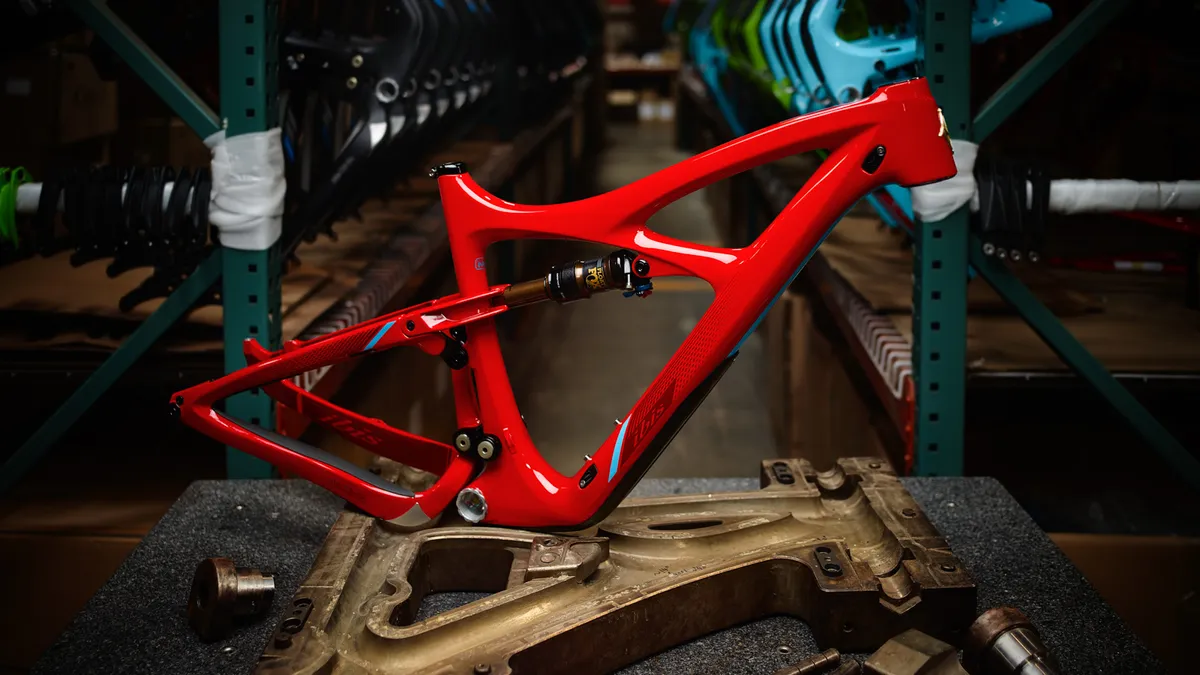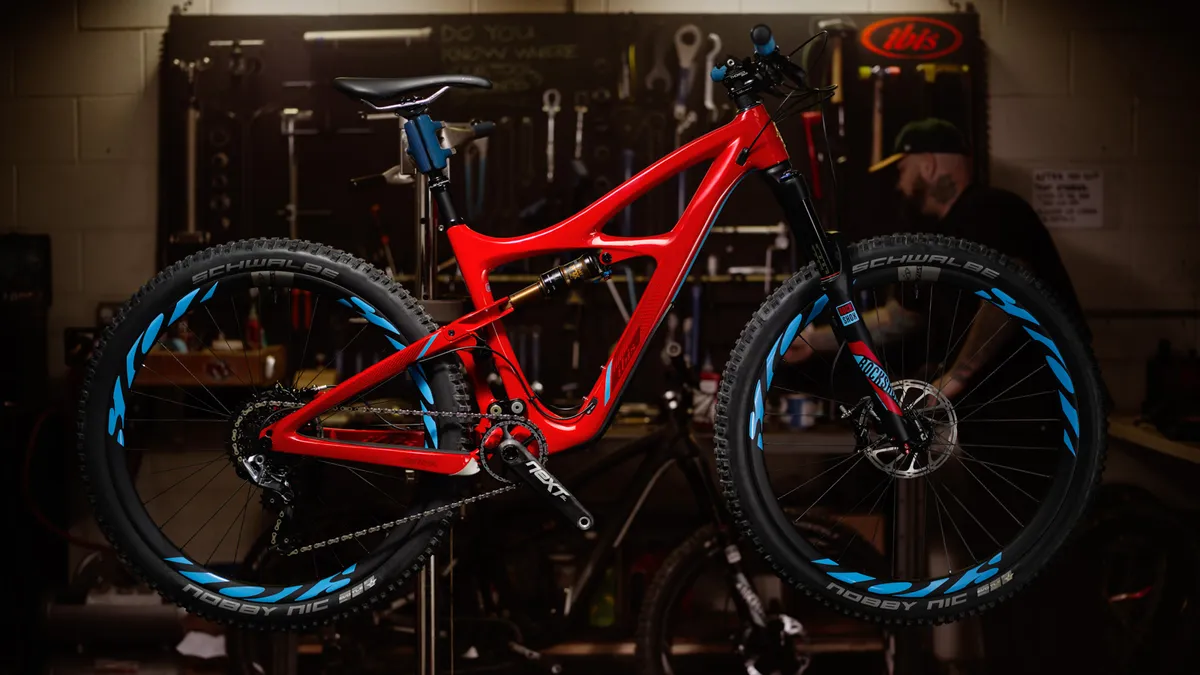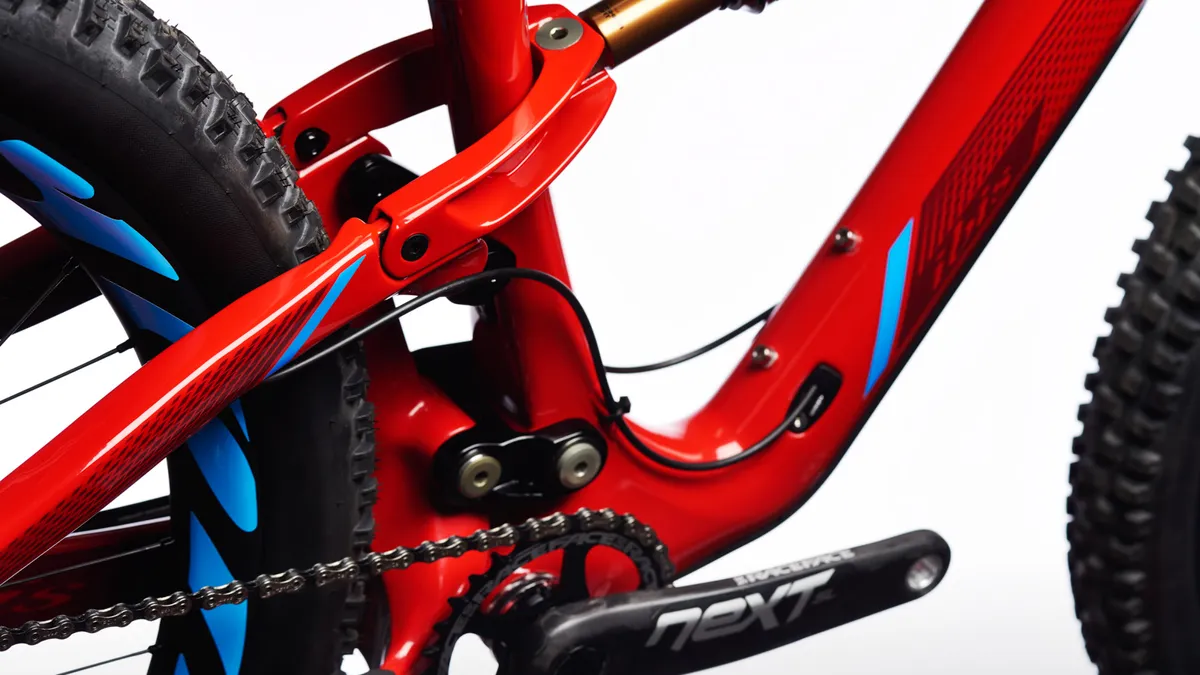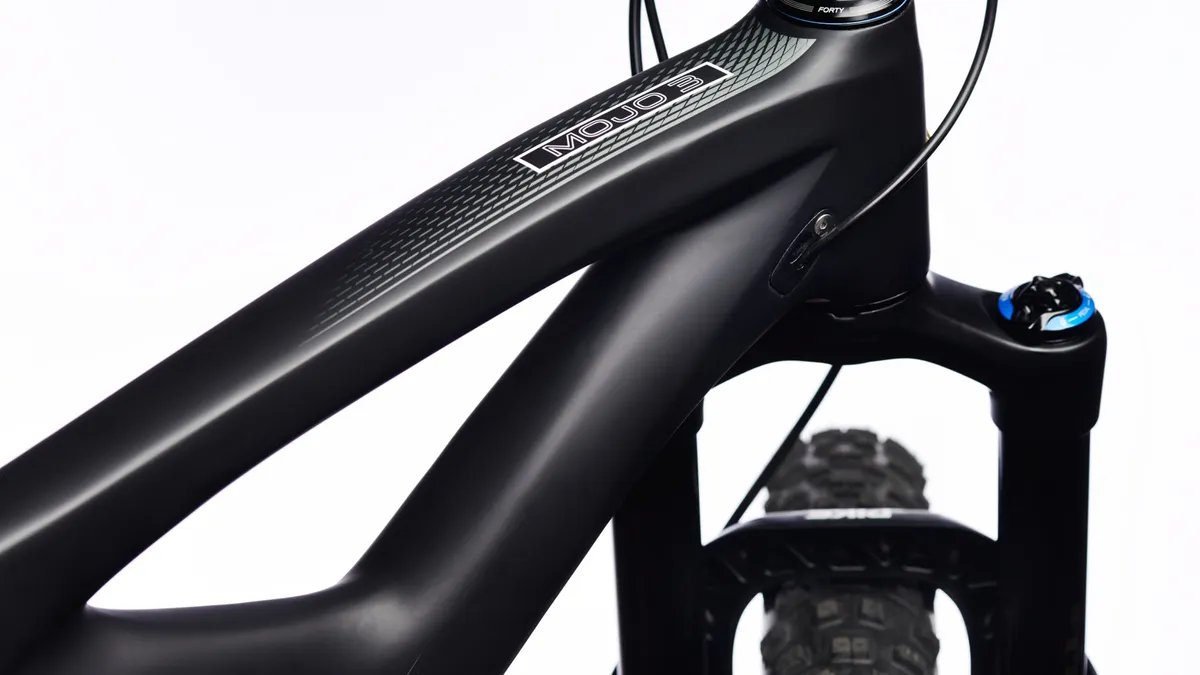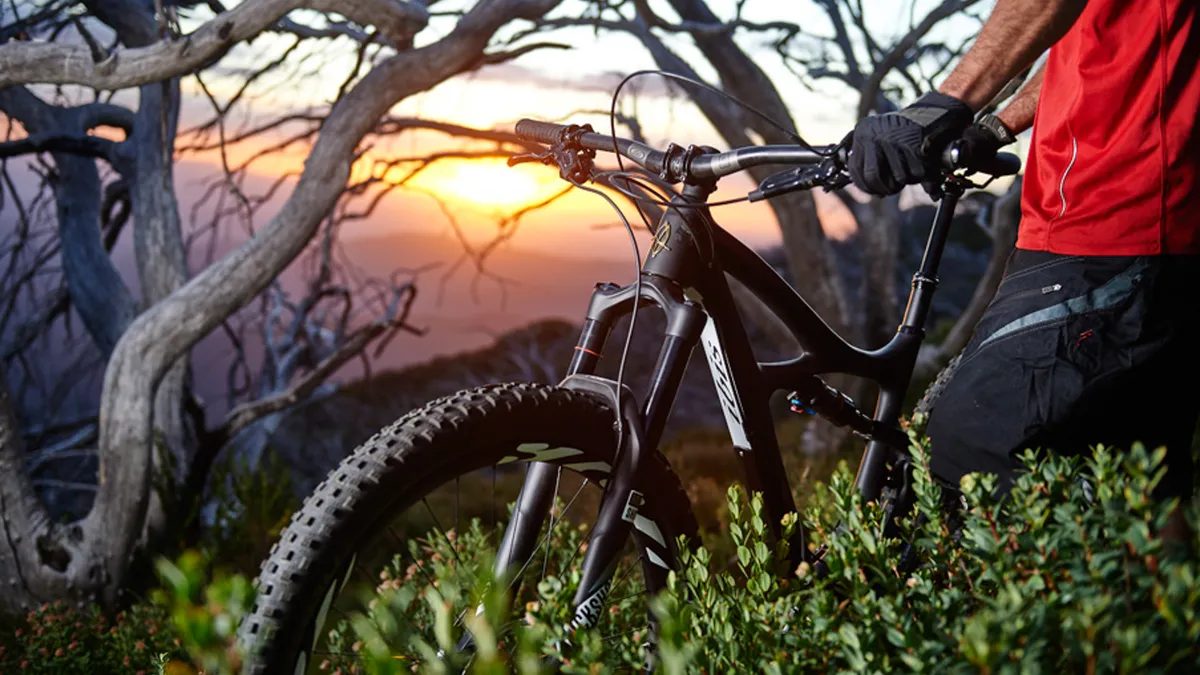Way back in the early 90s, Ibis was a quirky Californian bicycle company with an immensely popular steel hardtail, called the Mojo. Fast-forward to 2005 and the brand relaunched to much fanfare with the Mojo Carbon, a long-travel trail bike that took many brands years to match.
With relatively few alterations along the way, that second-gen Mojo lasted a decade in a highly competitive premium market segment. Today, Ibis has announced its third generation of the Mojo. Welcome, the Mojo 3.
Details in brief
- Bike type: Trail
- Wheel size: 27.5 and 27.5 (up to 2.8in width)
- Suspension travel: 130mm rear, 140mm front
- Suspension system: Fifth generation DW-Link
- Head angle: 66.8 degrees (with 140mm Pike Boost fork)
- Frame pricing: $2,999 / £2,649 / AU$TBC
- Frame weight: 2.5kg / 5.5lb, including FOX shock
- Availability: In stock and shipping
Details, less brief
Long and slack, the Mojo 3 looks to be every bit a new age trail bike and fits with a strong industry trend toward wider rubber. It shares many similarities to the longer-travel (150mm) Mojo HD3 we love, but in a smaller and perhaps more customizable package.
Related: Mojo HD3 reviewed and highly rated
With room for a 2.8in tire on a wider rim, this new 130mm trail bike is designed to work with both 27.5 and 27.5 wheels. By using Boost hub spacing, Ibis has managed to attain an impressively short 425mm chainstay length. Up front there’s a 66.8-degree head angle when mated to a 140mm fork.
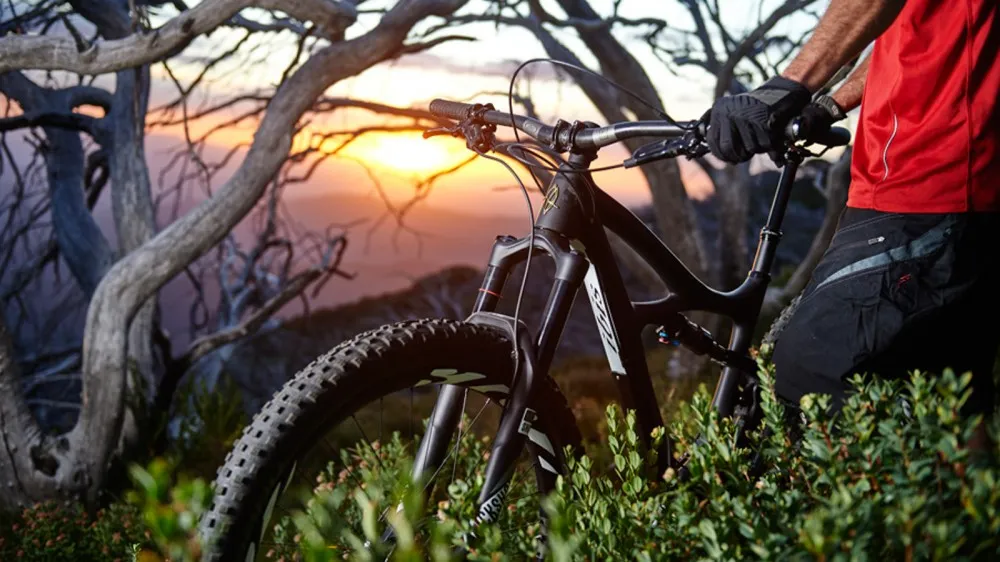
Ibis certainly rates wider rubber, but the choice is still yours
Ibis has seemingly spent plenty of time testing 27.5 treads and came to the conclusion that low height 2.8in rubber matched to its own 35mm width rim (741) is an ideal balance. (Too tall and the additional height can lead to an uneasy springing feeling.)
Related: Ibis' 741 35mm wide wheels reviewed
By selecting slightly shallower plus-sized tires from Schwalbe and Maxxis, the brand decided to take advantage of the designer allowances of a smaller diameter wheel. This means the Mojo 3 is not 29er compatible like some other Boost-equipped trail bikes out there.
Interestingly, Ibis states that the bottom bracket heights are kept the same when using a 2.3 or 2.8in tire on the Mojo 3. This isn’t due to some clever geometry adjusting shock chip or angle headset, but rather simply from tire sag. The Santa Cruz-based brand realized that increased sag of a 2.8in tire compared with a 2.3 approximately equals out the bike’s height with a rider’s weight on top.
Ibis acknowledges that plus-sized tires aren’t the best choice if you regularly ride in mud, and suggests using the Mojo 3 with 2.3in rubber in stickier conditions. However, for those keen on fattening up, the maker claims the Mojo 3 with 2.8in rubber descends similar to its 150mm HD3 with 2.3in, but in a lighter, easier-climbing and faster-cornering package.
A far lighter proposition
The monocoque carbon Mojo 3 frame is said to be equal in stiffness to its HD3 big brother, but at far reduced weight of just 2.5kg/5.5lb including its Fox Factory Float DPS EVOL and Kashima-coated rear shock.
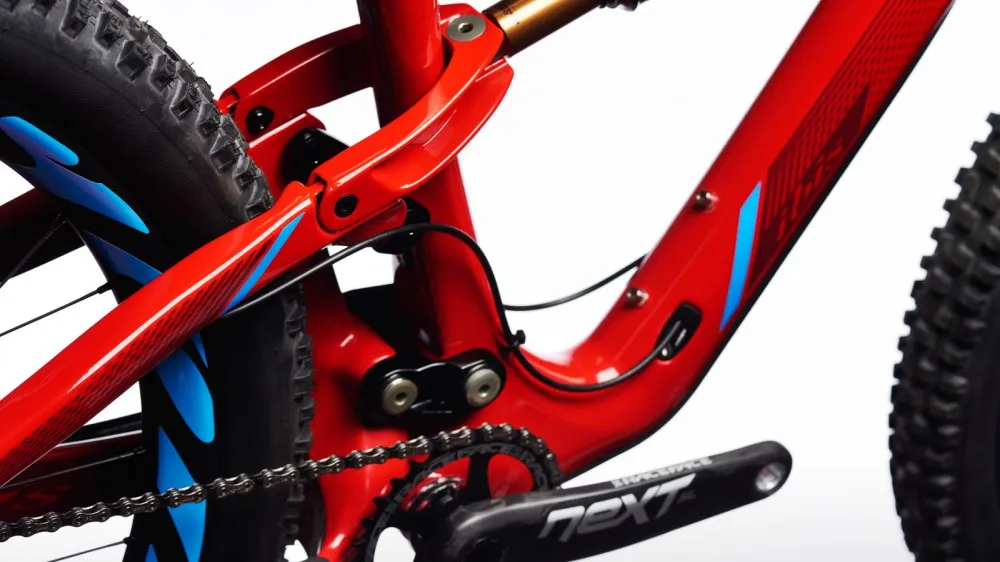
Big bearings, wide spacing and a suspension design borrowed from its bigger and burlier brother – Ibis states the Mojo 3 is stiff
Sharing a similar new generation of the DW-Link with the HD3, the Mojo 3 offers more anti-squat support deeper into its travel. With the Fox DPS shock with EVOL air sleeve, Ibis claims the suspension is smooth and predictable through its full 130mm of travel. Because the the supportive suspension is said to resist wallowing in the middle range, Ibis has been able to lower its bottom bracket height without fear of pedal strike issues.
The Mojo 3 also remains compatible with either 1x or 2x drivetrains – no small feat with such short chainstays and chunky rubber compatibility. Offering a cleaner look, the derailleur mount is removable for those not using a left-hand shifter.
The finer details have clearly not been forgotten, with such favourites as a threaded bottom bracket, ISCG05 chainguide mount and plenty of internal cable routing options all present and correct. More of what you can’t see includes dual-row angular contact bearings on the drive side of the lower link and large radial bearings on the non drive side for stiffness and durability. And for an additional $30, there’s an optional polycarbonate down tube cable guard available.
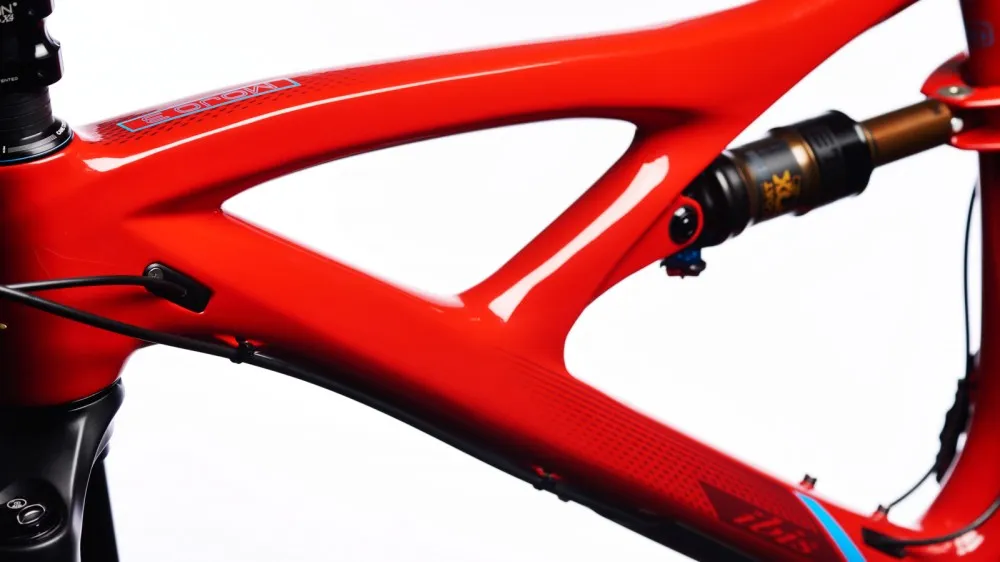
Familiar, but different
Aesthetically, the Mojo 3 flaunts its heritage, sporting a dual front triangle. Such design cues are from Roxy Lo, the industrial designer responsible for the original full-sus Mojo Carbon, and all of Ibis’ bikes. Thankfully, this new one does accept a bottle within the main frame.
There are four frame sizes on offer, which are said to fit riders from 5ft (152cm) all the way through to 6ft 6in (200cm). Lo, who stands just over 5ft herself, spent plenty of time on the new Mojo 3. It was found that riders of her size don’t always get the same ride quality out of the suspension, and so Ibis will offer a ‘Roxy’ shock tune free of charge for riders under 61kg/135lb in weight.
The Mojo 3 is already hitting dealers. The frame with rear shock is priced at $2,999 / £2,649 / AU$TBC, with complete bikes starting from $3,999. For more details including complete bike options, visit the Ibis site.
